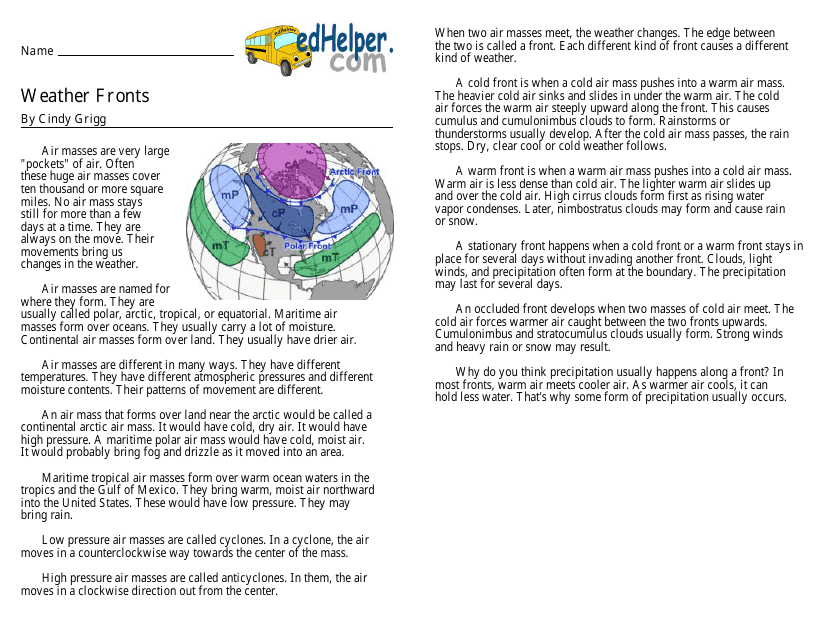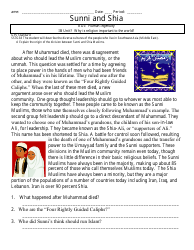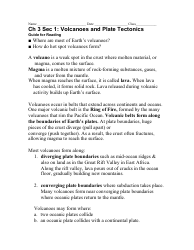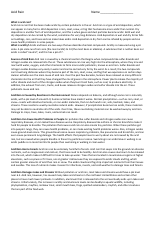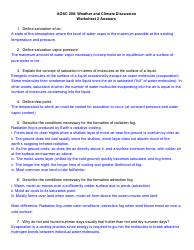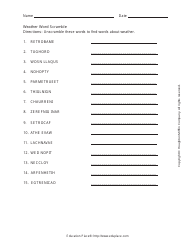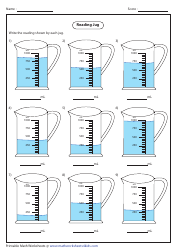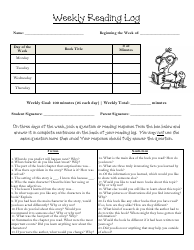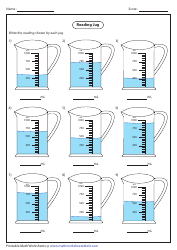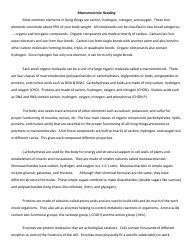Weather Fronts Reading Comprehension Worksheet
The Weather Fronts Reading Comprehension Worksheet is used to test and assess a person's understanding of weather fronts, which are boundaries between different air masses. It helps to gauge a person's knowledge and comprehension of topics related to weather patterns and meteorology.
FAQ
Q: What are weather fronts?
A: Weather fronts are boundaries between air masses that have different characteristics.
Q: What are the different types of weather fronts?
A: There are four types of weather fronts: cold fronts, warm fronts, stationary fronts, and occluded fronts.
Q: What happens when a cold front approaches?
A: When a cold front approaches, it can cause cooler temperatures, strong winds, and heavy precipitation.
Q: What happens when a warm front approaches?
A: When a warm front approaches, it can bring warmer temperatures, light rain, and sometimes fog.
Q: What is a stationary front?
A: A stationary front is a boundary between two air masses that is not moving. It can bring several days of cloudy and rainy weather.
Q: What is an occluded front?
A: An occluded front occurs when a cold front overtakes a warm front. It can bring cool temperatures and precipitation.
Q: How do weather fronts affect the weather?
A: Weather fronts can bring changes in temperature, wind direction, and precipitation.
Q: What are some indicators of a coming weather front?
A: Some indicators of a coming weather front include changing temperatures, shifts in wind direction, and changes in cloud formations.
Q: Why is it important to understand weather fronts?
A: Understanding weather fronts can help us predict and prepare for changes in the weather, which can be important for safety and planning activities.
